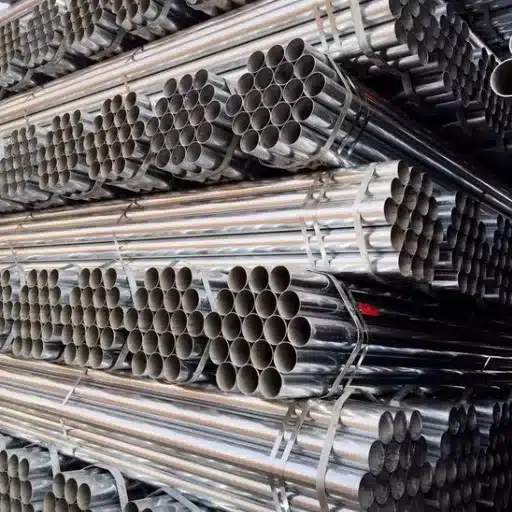Stainless steels are highly useful metals known for being strong, tough, and not prone to rust. It is no wonder that many grades of stainless steels exist, with 304 and 316 stainless steel being the most popular ones because of their specific traits. While these two grades look the same at first sight, noticing details can make the difference between choosing the right material for certain purposes. This article aims to provide a comprehensive comparison between 304 and 316 stainless steel, their chemical makeup, properties, applications, as well as tips and tricks on how to tell one from the other. An inspector, fabricator, builder, or even a rote learner of materials science will be able to understand the implications of these grades of stainless steels after reading this guide.
What is the Difference Between 304 and 316 Stainless Steel?
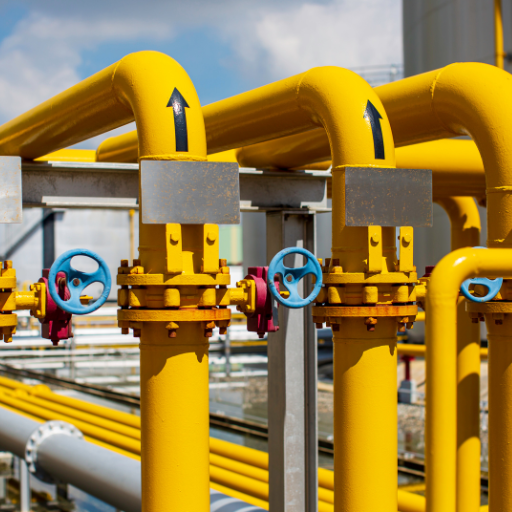
The main difference of importance between 304 and 316 stainless steel is their chemical makeup and their ability to resist corrosion. Molybdenum is present in 316 stainless steel stainless steel which greatly improves corrosion resistance, especially in more extreme surroundings like saltwater or chemicals. 304 stainless steel is cheaper and better for general use in less corrosive environments. So, the difference between the two is based on the restrictions and prerequisites of your project.
Understanding the Chemical Composition
In my time in the industry, the knowledge of the chemical makeup of materials, for example, stainless steel, is imperative when trying to decide which option best suits a particular application. The differences that exist between 304 and 316 stainless steels are found mostly in the alloying constituents. The presence of molybdenum in 316 steel, for example, is a remarkable improvement for chloride-hospitable environments like marine and some industrial areas. 304 stainless steel, on the other hand, is cheaper and more forgiving than 316 stainless steel and therefore, performs better in less demanding surroundings. In the end, deciding on what grade to use relies on a thorough analysis of the surrounding conditions and the required performance of the project in question.
Examining Corrosion Resistance
Regarding resistance to corrosion, I am frequently questioned as to which is superior: 304 stainless steel or 316 stainless steel. In my opinion, the decision basically depends on the circumstances in which the material will be used. So, allow me to explain this to you in detail.
- Chloride Exposure: In case you need to work in an environment with excessive chloride levels, such as coastal locations, marine applications, industrial wash-downs, or salt facilities, 316 stainless steel is ideal. The addition of molybdenum (typically about 2-3%) in 316 stainless steel gives it superior resistance to pitting and crevice corrosion caused by chlorides.
- Temperature: In some cases, the corrosion resistance can be dependent on the temperature. 304 stainless steel does well with moderate to higher temperatures, but in the presence of elevated temperatures with chlorides, 304 falls short. This is where the added performance benefits of 316 become very useful.
- Cost Considerations: 304 stainless steel is often able to meet performance specifications and is significantly cheaper, if the environment does not subject the material to harsh chemicals or salty surroundings. It is flexible in nature and is suitable for general indoor or structural use.
- Moisture and Humidity: For high humidity applications that do not contain significant levels of chloride, such as food processing or medical equipment, either of these grades should work; however, the final decision should be made after testing for humidity and contaminant levels.
In the long run, my advice is to pay attention to these factors. Aspects such as time of exposure, maintenance schedules, and even aesthetic elements can impact the selection. When dealing with difficult conditions, getting an inspection from a material expert ensures that one is protected when dealing with corrosion resistance.
Exploring the Mechanical Properties
Focusing on key aspects of mechanical properties like tensile strength, yield strength, elongation, and hardness is critically necessary. These abilities indicate a material’s performance when different loads and stresses are applied. For example, high tensile strength guarantees durability under tension while sufficient elongation provides flexibility to deform without cracking. Taking all these properties into account, as well as application-specific needs, makes sure the material selected will perform the functionalities as well as safety measures appropriately and efficiently.
How to Identify 304 and 316 Stainless Steel
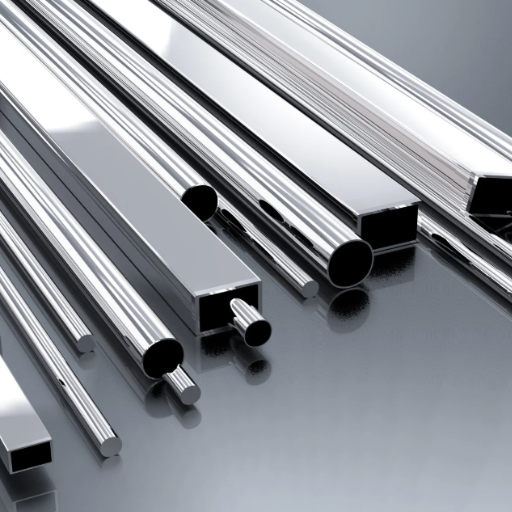
To differentiate between 304 and 316 stainless steel, I usually incorporate a combination of visual examination, tests, and my knowledge regarding their composition. Both alloys look similar, but 316 has molybdenum, which gives it better corrosion resistance, especially in ocean or high salt environments. To confirm the difference, I often conduct some form of chemical analysis or spot test, in this case, a molybdenum test for 316. Also, if such material certifications or documentation are available, they can certainly help. Moreover, knowing how or where the material will be used also assists in telling which one is better, as 316 is more often selected due to its greater resistance to corrosion in more extreme environments.
Using Magnetic Properties for Identification
For identifying material types via magnetism, my focus is on a cursory method that has worked for me throughout the years. Stainless steel types 304 and 316 have varying compositions and thus, differing degrees of magnetism. This is how I simplify it:
- Understand the Basics of Magnetism
The fine-grained austenitic stainless steels like 304 and 316 are referred to as non-magnetic alloys in the annealed state. However, in certain instances, areas may develop magnetic properties due to cold working or welding processes. As a result, a simple magnet test can serve as a useful initial step, but nothing more than that.
- Use a Strong Magnet
In case I have a piece of the material, I employ a small but powerful magnet. If the magnet latches on to the surface with high tension, this shows the presence of ferrite, which is far more prevalent in cold worked stainless steels and is frequently observed in 304. In contrast, 316, due to being richer in molybdenum, tends to have lower or negligible magnetic attraction; molybdenum is known to suppress ferrite formation.
- Consider the Composition Differences
The important factor here is molybdenum addition, which in 316 is around 2-3%. It not only enhances corrosion resistance but also renders the alloy more resistant to magnetism even when under stress. This is why 316 is so much weaker in magnetic response than 304, and knowing this explains why it is more reactive than 304.
- Account for Environmental Factors
When I am testing a material that has been welded or worked, I make note that the processes may change its magnetic properties to a certain degree. For example, even 316 can show some magnetic properties if it has been worked to a reasonable extent.
By taking these steps, I can utilize magnetic properties as a useful initial screening. That said, I always suggest additional checks like a chemical spot test or a material certification review to guarantee identification is correct.
Testing for Molybdenum in 316
In 316 stainless steel, I find the chemical spot test to be especially dependable for molybdenum verification. It consists of putting a particular reagent on the surface that reacts with molybdenum and often changes color. This is the simplest and direct approach for me when I want quick results. For reliable confirmation, I use XRF (X-ray fluorescence) analyzers, which non-destructively deliver precise elemental composition data. These methods used in conjunction allow me to confidently verify the molybdenum content, and correspondingly, the material properties.
Checking the Grade of Stainless Steel
For the precise verification of the grade of stainless steel, integrating simple approaches as well as complex techniques is highly suggested. Begin with a couple of basic tests, such as a magnetic test and a nitric acid spot test. These initial tests give a basic understanding of the nature of the material. Afterwards, confirm the grade with an XRF analyzer or spectrometer, which gives accurate results on the true elemental makeup of the sample. With this methodology, there is an effective and accurate identification of stainless steel grade without destruction of the sample.
What are the Main Differences Between 304 and 316?
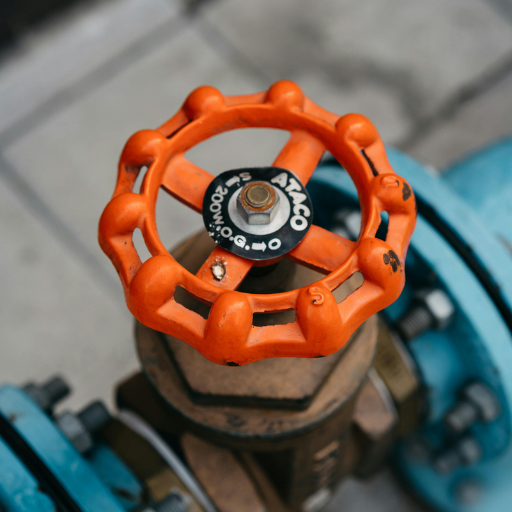
Differences in composition and performance characteristics in certain environments are the primary distinctions between 304 and 316 stainless steel. Based on my experience, 304 is a primary candidate for use in all types of stainless steel applications as it is tough, corrosion-resistant, and economically friendly. 304 is used in kitchen appliances, the automotive industry, and construction. In contrast, 316 stainless steel is more expensive due to its enhanced corrosion resistance compared to 304 because of added molybdenum, which makes it ideal for marine environments and industries with harsh chemicals. In applications where resistance to pitting and crevice corrosion is of higher priority, 316 is the better option and is, therefore, more costly. 316 and 304 ratios are chosen depending on the operational performance needs and financial limits.
Comparing the Steel Grades
The decision between 304 and 316 stainless steel primarily relies on the requirements of your application. 304 is a great choice for general-purpose use due to its corrosion resistant, affordable, and reliable nature. But, when exposed to chlorides, saltwater, or harsher chemicals, 316 steals the show avec its superior durability due to greater molybdenum content. Finding the sweet spot between cost and environmental demands is what will provide the most suitable grade.
Analyzing the Austenitic Stainless Steel Types
Changing from grade 304 to 316 austenitic stainless steel raises many concerns and questions. Drawing from my work in the industry, here’s how I would go about making the decision to choose the correct type.
- Corrosion Resistance –Stainless steel 304 has superior corrosion resistance which meets the needs of most surroundings, whether it be indoors or processing food. However, the molybdenum in 316 stainless steel makes it superior when resisting pitting and crevice corrosion over more aggressive environments such as coastal areas or industrial locations exposed to chlorides or chemicals.
- Durability – Both grades are durable but require 316’s added durability when exposed to harsh environments. 316’s increased durability is often necessary for marine hardware, chemical tanks, and medical implants due to the harsh conditions they are required to endure.
- Cost – While 304 stainless steel offers the most cost effective solution by not sacrificing essential performance in less extreme conditions. It’s always good to have in mind the price as well. If cost is the main factor, 304 would be a much better option then 316 as the increased molybdenum would increase the price severely.
- Application-Specific Needs – While both perform well at higher temperatures and involve welding, 304’s additional machinability provides an edge when ease of fabrication is required.
In conclusion, the decision truly depends on balancing your needs, such as being exposed to corrosive agents, what you plan to use it for, and how much you are willing to spend. Evaluating these factors in relation to your application enables you to choose the appropriate grade with ease.
Investigating 316 Grade Advantages
Based on my experience with different applications, here’s something I’m certain about: Grade 316 stainless steel works best when high durability and resiliency are required because it can withstand very harsh surroundings. Its increased resistance to chlorides and acids makes it the prime candidate for use in marine, chemical processing, and medical devices. The addition of molybdenum to the composition also protects it from pitting and crevice corrosion. While 316 does have a slightly elevated price when compared to 304, 316’s value in long-term cost benefits often proves itself in demanding conditions over time. In those scenarios where dependability is the most important factor, 316 excels.
How Does the Corrosion Resistance Vary Between 304 and 316?

Because molybdenum is included in 316’s composition, its corrosion resistance is greater than that of 304. This element greatly improves 316’s resistance towards pitting and crevice corrosion, especially in chloride-rich environments, like marine or chemical settings. Although 304 has good enough corrosion resistance in less aggressive processes, it is 316 which is best suited for more severe corrosive conditions.
Impact of Environmental Conditions
In my experience, the surroundings have a significant effect on material performance. The choice between 304 and 316 stainless steel can depend greatly on the existence of corrosive phenomena such as chlorides or very hot temperatures. 316 has exceeded expectations in marine environments where saltwater would swiftly escalate the degradation of 304. And, in normal usages where the part is exposed to harsh conditions, 304 seems to be a good answer from the economic point of view. In the end, grasping the relevant environmental requirements is important in arriving at a logical conclusion.
Role of Molybdenum in 316
Molybdenum is important in terms of improving the corrosion resistance of 316 stainless steels, especially for chloride-bearing environments. Its incorporation greatly aids in pitting and crevice corrosion resistance, making the alloy ideal for applications subjected to seawater, brine, and other chemically harsh environments. It also renders 316 stainless steel different from 304, most especially stark in tough settings when corrosion resistance coupled with durability is needed.
Comparative Analysis of 304 vs 316 Stainless Steel
In my experience working with stainless steel alloys, the selection of 304 or 316 alloys is primarily dictated by the use case as well as the surrounding conditions. In my opinion, stainless steel grade 304 is an excellent “jack of all trades” option because of its corrosion resistance, price, and relative adaptability. It’s best suited to milder environments, like kitchen appliances and building materials. However, in the presence of harsh chemicals, salt water, or chloride, grade 316 is the better choice, as it provides superior resistance to these elements due to its molybdenum content. It is more durable in the marine, chemical processing, and pharmaceutical industries, which are more prone to pitting and crevice corrosion. Though 316 is more costly than 304, its improved effectiveness and lifespan help justify the price in critical use cases.
Which Grade of Stainless Steel Should You Choose?
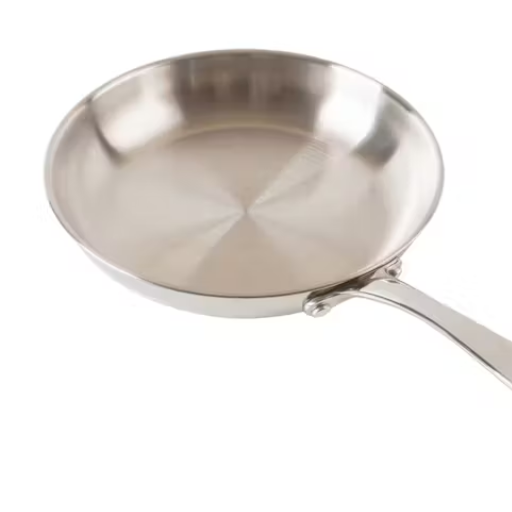
Think about how the environmental factors of your application in question will impact performance if you are pondering over which grade of stainless steel to use. 304 stainless steel is the most suitable option if your focus is on cost savings and general corrosion resistance. But, if there’s an exposure to more challenging conditions like higher levels of chloride or extreme temperatures, 316 stainless steel would be much better because of its resistance and durability. Choosing the correct grade guarantees ideal results and durability for your application.
Determining the Application Needs
In any case, I would analyze the surrounding environment and the specific stressors at hand when determining the application needs. Considerations such as moisture, chemicals, and varying temperatures are key indicators not to overlook. This is where establishing corrosion resistance and heat tolerance become top priorities. In addition to this, I look at cost constraints that can affect performance. For more versatile applications, my go-to choice is 304 stainless steel as its costs are quite reasonable. Conversely, those working in harsher environments with much more exposure to saline would benefit greatly from 316 stainless steel and the additional durability and resilience it offers. Knowing these points helps make sure that the material selection is perfectly tailored to the specific application needs.
Understanding the Cost Implications
When choosing a certain grade of stainless steel, the trade-off between the material’s upfront cost and how it will function long term on performance is crucial. 304 stainless steel is the best for more common purposes that do not have extreme conditions, it’s affordable. But for harsher environments, like one that is corrosion resistant, investing in 316 stainless steel would be more economical in the long run because it saves on maintenance and replacement fees. 316’s initial cost is higher, but it is less expensive in the long run due to its high durability and harsh condition tolerance.
Evaluating the Long-term Benefits
With regard to determining the value of 304 and 316 stainless steel in the long term, it is my recommendation that the choice of material be made concerning the conditions it is to be applied. Here is my approach, step by step:
- Corrosion Resistance
316 stainless steel is the best option if saltwater, industrial chemicals, or any other type of corrosive material is frequently present because it has greater corrosion and pitting protection with high molybdenum content. With 316 stainless steel, there is greater assurance of longer operational life while utilizing a lower risk of failure throughout its use.
- Cost Consideration
For less demanding environments, 304 stainless steel is a better option than 316 because it provides cost savings and reliability. 304 stainless steel provides great functionality at a lower cost which means that less money is spent upfront while still maintaining functionality.
- Maintenance and Longevity
Negative maintenance environments greatly reduces the lifespan of the applied materials due to constant repairs or replacements made to it 316 stainless has more upfront costs, but it allows for better long term cashflow as it requires lower replacement and maintenance expenses. When marine or chemical industries are considered, 316 stainless steel becomes the best choice for critical applications due to its durability.
- Strength and Durability
Both 304 and 316 stainless steel offer great strength and durability, but for extreme environments with aggressive chemicals or high temperatures, using 316 stainless steel is best due to its additional alloying elements.
Evaluating the surroundings, budget, and upkeep details, you can chicken out less than the value of 304 and 316 stainless steel for your assignment. Personally, I believe spending a bit more on good materials during the design stage saves money and inconvenience later.
Reference
- 304 vs 316 Stainless Steel – What’s the Difference?
- Know the Differences Between 304 Stainless Steel vs 316
- 304 vs 316 Stainless Steel: What You Need to Know
Frequently Asked Questions (FAQs)
Q: What are the main differences between 304 stainless steel and 316 stainless steel?
A: The primary difference between 304 stainless steel and 316 stainless steel lies in their chemical composition. 316 stainless steel contains molybdenum, which makes it more corrosion-resistant than 304 stainless steel. This additional element provides 316 stainless steel with better resistance to chlorides and acids.
Q: How can I tell if my stainless steel is 304 or 316?
A: To identify whether your stainless steel is 304 or 316, you can perform a few tests, such as a magnetic test or a chemical analysis. 304 stainless steel is more likely to be slightly magnetic, while 316 is generally non-magnetic due to its higher nickel content. A chemical analysis can reveal the exact composition, distinguishing 304 stainless steel from 316 stainless steel.
Q: What are the mechanical properties of 304 stainless steel compared to 316 stainless steel?
A: Both 304 stainless steel and 316 stainless steel have excellent mechanical properties. However, 316 stainless steel offers superior resistance to corrosion, especially in marine environments, due to its higher molybdenum content. This makes 316 stainless steel ideal for applications exposed to harsh conditions.
Q: Is 316 stainless steel more resistant than 304 stainless steel?
A: Yes, 316 stainless steel is more resistant than 304 stainless steel, particularly to corrosion and pitting in chloride environments. This is due to the presence of molybdenum in its composition, which provides enhanced durability and longevity in aggressive conditions.
Q: Can 304 stainless steel and 316 stainless steel be used interchangeably?
A: While both types of stainless steel are versatile and used in similar applications, they should not always be used interchangeably. 316 stainless steel is recommended for environments where strong corrosion resistance is necessary, such as in marine or chemical processing settings. 304 stainless steel is suitable for general-purpose use where such resistance is not as critical.
Q: What are the typical applications for 304 and 316 stainless steel?
A: 304 stainless steel is commonly used in kitchen equipment, food processing, and architectural paneling due to its excellent formability and welding properties. 316 stainless steel is preferred for marine applications, medical devices, and chemical processing equipment, where enhanced corrosion resistance is crucial.
Q: Are there visual differences to identify stainless steel grades 304 and 316?
A: Visually distinguishing between 304 and 316 stainless steel is challenging since they look similar. However, their applications and environments can often provide clues. If the stainless steel is used in a highly corrosive environment, such as marine applications, it is likely 316 stainless steel due to its superior corrosion resistance.
Q: Why is 316 stainless steel more expensive than 304 stainless steel?
A: 316 stainless steel is more expensive than 304 stainless steel because it contains more nickel and molybdenum, which enhance its corrosion resistance and durability. These additional elements increase the cost of production, making 316 stainless steel pricier.
Q: How does the presence of nickel affect the properties of 304 and 316 stainless steel?
A: Nickel enhances the corrosion resistance and ductility of stainless steel. In both 304 and 316 stainless steels, nickel contributes to their strength and resistance to oxidation. 316 stainless steel contains more nickel than 304, providing it with superior corrosion resistance, especially in corrosive environments.






